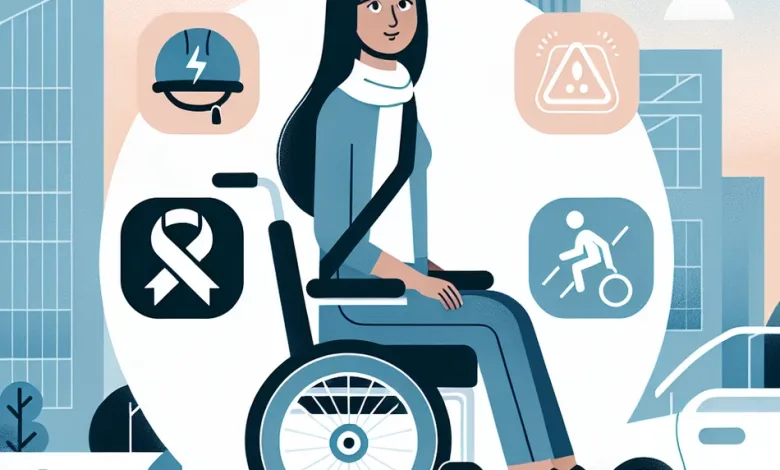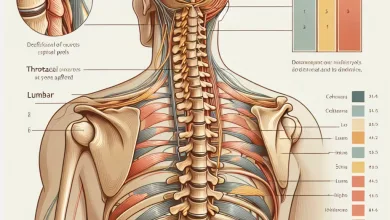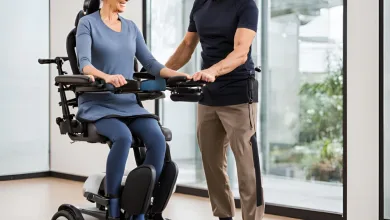Power Wheelchair Safety Tips for Preventing Accidents and Injuries

Table of Contents
Ensuring Your Mobility and Well-being on Wheels
Power Wheelchairs have revolutionized mobility for many individuals, offering independence and freedom. However, with this newfound mobility comes the responsibility of ensuring safety. This comprehensive guide will explore various aspects of power chair safety, providing essential tips and strategies for preventing power chair accidents and staying safe while enjoying your mobility device.
Understanding the Importance of Power Wheelchair Safety
Before we dive into specific safety measures, it’s crucial to understand why power wheelchair injury prevention is so important. Power chairs are powerful devices that can significantly enhance quality of life but also come with potential risks if not used properly. By following electric wheelchair safety guidelines, you can minimize these risks and maximize the benefits of your mobility device.
Getting Started: Basic Safety Measures
Let’s begin with some fundamental safety tips that every power chair user should know:
- Read the Manual: Always start by thoroughly reading your power chair’s user manual. It contains vital information specific to your model.
- Wear Your Seatbelt: This simple step can prevent falls and injuries, especially when navigating uneven terrain.
- Check Your Surroundings: Before moving, always look around to ensure your path is clear of obstacles.
- Use Appropriate Speed: Adjust your speed based on your environment. Slower speeds are safer in crowded or unfamiliar areas.
- Keep Your Hands on the Controls: This ensures you’re always ready to react.
These basic steps form the foundation of the safe operation of power chairs and should become second nature with practice.
Mastering Safe Maneuvering in Power Chairs
Safe manoeuvring in power chairs is a skill that develops over time. Here are some tips to help you navigate various environments safely:
Indoor Navigation
- Plan Your Route: Before moving, mentally map your path to avoid tight spots or obstacles.
- Use Ramps Carefully: When using ramps, approach them straight-on and maintain a steady speed.
- Doorway Etiquette: Approach doorways slowly and straight-on to avoid catching your wheels or armrests.
- Elevator Safety: When entering an elevator, always face forward and turn off your chair once inside.
Outdoor Adventures
- Curb Caution: Always use designated curb cuts or ramps. Only climb or descend a curb if your chair is designed for it.
- Weather Wisdom: Be extra cautious in wet or icy conditions. Avoid going out in extreme weather if possible.
- Terrain Awareness: Stick to smooth, paved surfaces when possible. If you must traverse rough terrain, do so slowly and carefully.
- Visibility Matters: Use lights and reflectors when operating your chair in low-light conditions.
Mastering these manoeuvring techniques will significantly reduce your risk of accidents and injuries.
Power Mobility Device Safety: Essential Features to Know
Modern power chairs come equipped with various power chair safety features designed to enhance user safety. Understanding and adequately using these features is crucial for power mobility device safety. Some key safety features include:
- Anti-Tip Wheels: These small wheels at the back of your chair help prevent backward tipping.
- Speed Governor: This feature limits your chair’s top speed for safety.
- Automatic Braking: Many chairs automatically engage brakes when not in motion.
- Obstacle Sensors: Some advanced models have sensors that detect and alert you to obstacles.
- Adjustable Controls: Customizable controls ensure comfortable and safe operation for users with different abilities.
Take the time to familiarize yourself with your chair’s specific safety features and how to use them effectively.
Wheelchair User Safety Precautions: Daily Checks and Habits
Developing good safety habits is essential for preventing power chair accidents. Here’s a daily checklist to incorporate into your routine:
- Battery Check: Ensure your batteries are sufficiently charged before heading out.
- Tyre Inspection: Check your tyres for proper inflation and any signs of wear or damage.
- Brake Test: Verify that your brakes are working correctly before each use.
- Control Check: Make sure all controls are responding as they should.
- Cleanliness: Keep your chair clean and free from debris that could interfere with its operation.
You’ll catch potential issues by performing these quick checks daily before they become safety hazards.
Avoiding Power Chair Hazards: Environmental Awareness
Being aware of your environment is crucial for avoiding power chair hazards. Here are some potential dangers to watch out for:
- Uneven Surfaces: Be cautious on bumpy or sloped terrain.
- Wet Floors: Indoor spills or outdoor puddles can make surfaces slippery.
- Narrow Spaces: Be careful in tight spots to avoid getting stuck or tipping.
- High Thresholds: Some doorways may have high thresholds that could tip your chair.
- Crowds: In busy areas, be extra vigilant to avoid collisions with people or objects.
Developing a keen awareness of these potential hazards will help you navigate more safely in various environments.
Power Chair Maintenance for Safety: Keep Your Chair in Top Shape
Regular maintenance is key to power chair maintenance for safety. Here’s a basic maintenance routine to follow:
- Regular Cleaning: Keep your chair clean and free from dirt and debris.
- Battery Care: Follow manufacturer guidelines for battery charging and replacement.
- Tyre Maintenance: Check tyre pressure regularly and replace worn tyres promptly.
- Electrical Checks: Have a professional check your chair’s electrical systems annually.
- Lubrication: Keep moving parts lubricated to prevent wear and ensure smooth operation.
By keeping your chair well-maintained, you’ll extend its lifespan and ensure it operates safely and reliably.
Electric Wheelchair Accident Prevention: Advanced Strategies
While basic safety measures are crucial, there are also advanced strategies for electric wheelchair accident prevention:
- Route Planning: Before heading out, plan your route to avoid potential hazards or rugged terrain.
- Weather Monitoring: Stay informed about weather conditions and plan accordingly.
- Emergency Preparedness: Always carry a charged mobile phone and emergency contact information.
- Visibility Enhancement: Use flags, lights, or reflective tape to make your chair more visible to others.
- Regular Skills Practice: Practice manoeuvring in a safe environment to keep your skills sharp.
These advanced strategies can significantly reduce your risk of accidents and enhance your overall safety.
Power Chair User Safety Training: Continuous Learning for Better Safety
Safety is an ongoing process, and power chair user safety training should be continuous. Here are some ways to keep learning and improving your safety skills:
- Attend Workshops: Look for local workshops or seminars on power chair safety.
- Online Resources: Utilize online tutorials and safety guides from reputable sources.
- Peer Learning: Connect with other power chair users to share tips and experiences.
- Professional Consultation: Regularly consult your healthcare provider or mobility specialist for personalized safety advice.
- Simulated Practice: Use safe, controlled environments to practice navigating challenging scenarios.
Remember, the more you learn and practice, the safer and more confident you’ll be in your power chair.
Mobility Device Safety Measures: Beyond the Basics
In addition to the fundamentals, there are several advanced mobility device safety measures to consider:
- Custom Modifications: Work with professionals to make safety-enhancing modifications to your chair if needed.
- Smart Technology Integration: Consider incorporating smart devices for additional safety features like GPS tracking or automatic emergency alerts.
- Regular Professional Assessments: Schedule regular assessments with a mobility specialist to ensure your chair meets your needs safely.
- Safety Accessories: Explore additional safety accessories like extra padding, extended armrests, or specialized controls.
- Environmental Adaptations: Make necessary adaptations to your home environment to enhance safety and accessibility.
These advanced measures can provide extra safety and peace of mind for power chair users.
Power Wheelchair Risk Management: A Holistic Approach
Effective power wheelchair risk management involves a comprehensive approach to safety. Consider these strategies:
- Personal Health Management: Maintain good overall health to ensure you’re always at your best when operating your chair.
- Vision and Hearing Checks: Regular check-ups can help ensure you’re able to perceive potential hazards.
- Medication Awareness: Be aware of how medications might affect your ability to operate your chair safely.
- Cognitive Health: Engage in activities that maintain cognitive sharpness for better decision-making while operating your chair.
- Stress Management: Practice stress-reduction techniques to stay calm and focused while using your power chair.
By taking a holistic approach to risk management, you’ll be better equipped to handle any situation.
Pros and Cons of Different Power Chair Safety Approaches
| Approach | Pros | Cons |
| Strict Adherence to Basic Safety Rules | – Simple to remember and apply – Addresses most common safety concerns | – May not cover all unique situations – Can be perceived as limiting |
| Advanced Technology Integration | – Offers enhanced safety features – Provides added peace of mind | – Can be costly – Might require technical expertise |
| Continuous Safety Training | – Keeps user skills up-to-date – Meets evolving safety requirements | – Time-intensive – May not be accessible everywhere |
| Environmental Modifications | – Enhances safety in the home – Reduces everyday risks | – Can be expensive – Might not be practical in all living environments |
| Reliance on Safety Accessories | – Provides additional protection – Usually straightforward to use | – May not replace the need for other safety measures |
Conclusion: Empowering Safe Mobility
Powerchair safety is not just about following rules but empowering yourself to move through the world with confidence and independence. By implementing these tips and strategies for preventing power chair accidents, you’re taking control of your mobility and well-being.
Remember, safety is an ongoing journey. Stay informed, practice regularly, and don’t hesitate to seek help or advice when needed. With the proper knowledge and precautions, your power chair can be a gateway to freedom, adventure, and a fuller life.
Stay safe, stay mobile, and enjoy the independence your power chair provides!
Essential FAQs for Power Chair Users: Safety and Maintenance Tips
How often should I get my power chair professionally serviced?
- At least on an annual basis
- More frequently if it’s heavily used or if you notice any issues
- Adhere to the manufacturer’s guidelines for your specific model
Can I use my power chair in the rain?
- Most power chairs are water-resistant, not waterproof
- Light rain is generally acceptable, but avoid heavy downpours
- Thoroughly dry your chair after it gets wet
What actions should I take if my power chair tips over?
- Stay calm and call for help if you are alone
- Turn off the power if possible to avoid unintended movement
- Wait for assistance to help you up safely
- Have your chair inspected for damages before using it again
How can I enhance the visibility of my power chair in low-light conditions?
- Apply reflective tape to the back and sides of your chair
- Use LED lights or flags
- Wear bright or reflective clothing
Is it safe to transport my power chair in a vehicle?
- Yes, with proper securement systems
- Use approved tie-down straps and docking systems
- Consult with a mobility equipment specialist for the best options for your vehicle and chair model



